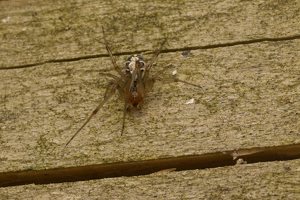- sort orderDefault
Photo title, A → Z
Photo title, Z → A
✔ Date created, new → old
Date created, old → new
Date posted, new → old
Date posted, old → new
Visits, high → low
Random - Google Map
- map
 home / Arachnida · voragyviai / Araneae · vorai / Theridiidae · kilpininkai / Phylloneta sisyphia · margasis kilpininkas
home / Arachnida · voragyviai / Araneae · vorai / Theridiidae · kilpininkai / Phylloneta sisyphia · margasis kilpininkas

Phylloneta sisyphia · margasis kilpininkas
- Mothercare Spider
- Kleine Haubennetzspinne
- margasis kilpininkas
- Kleine wigwamspin
- tältklotspindel
https://en.wikipedia.org/wiki/Phylloneta_sisyphia Phylloneta sisyphia has a wide Palaearctic distribution, it is widespread in western and central Europe, it is absent from Iceland. It is very similar to Phylloneta impressa and care needs to be taken in separating the two species.
The female is 2.5-5.5 mm in length, males are 2.5-4.5mm. The prosoma is reddish yellow with a broad, brown-black margin and median stripe. The sternum is reddish yellow, with a dark margin. The chelicerae are reddish yellow and the legs are also reddish yellow with brown rings. The abdomen is yellowish or reddish, with a dorsal dark brown spot pattern. Males and females are similar in colour and pattern.
Phylloneta sisyphia builds a retreat in the shape of an inverted cup, which is covered with plant debris. Underneath the retreat the spider spins the tangle wed typical of the Theridiidae. The adults are found in the early to mid-summer, with the majority of males being found in May and June and that of females in June, but they occasionally persist into October. The single, spherical bluish-green egg-sac is produced in summer, between June and August, which is slightly earlier than Phylloneta impressa, and are retained in the retreat. The emergent juveniles are fed orally by the female, giving rise to the common name, mothercare spider. Initially the food is regurgitated by the mother but as the juveniles grow larger the mother shares larger food items with them. The female will die before the juveniles leave the nest and they will eat her body.
Panašus į Phylloneta impressa · tamsiakraštis kilpininkas.











